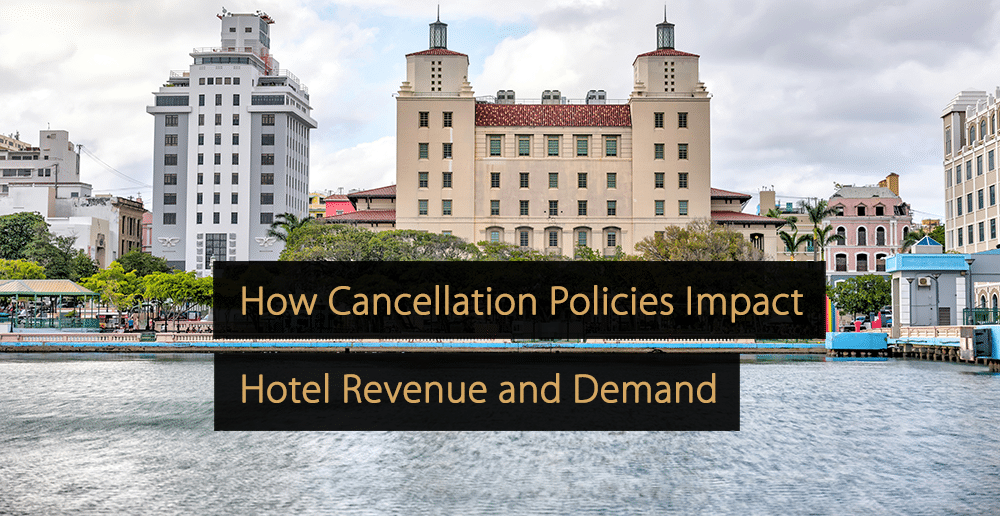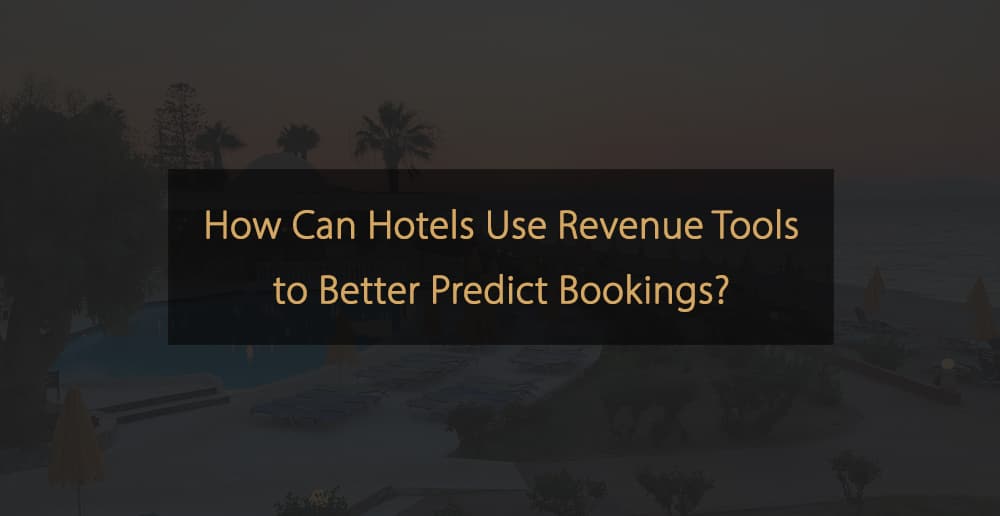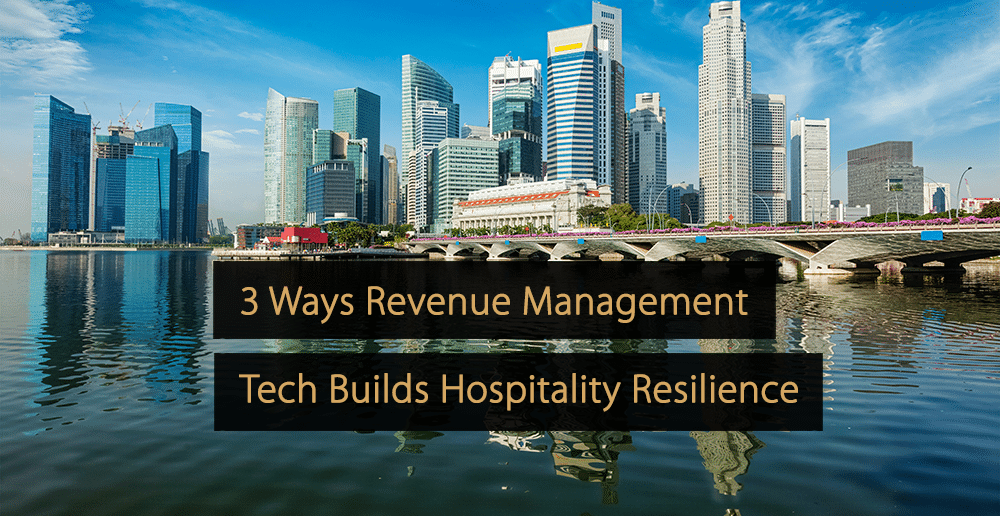Question for Our Revenue Management Expert Panel:
Is there value to be had in introducing metrics from other industries into hospitality? Do you think they have a place in Hotel Revenue Management? (Question by Pablo Torres)
Industry Expert Panel
Our Industry Expert Panel exists out of professionals within the hospitality & travel Industry. They have comprehensive and detailed knowledge, experience in practice or management and are forward-thinking. They are answering questions about the state of the industry. They share their insights on topics like revenue management, marketing, operations, technology and discuss the latest trends.
Our Revenue Management Expert Panel
- Pablo Torres – Hotel Consultant
- Dr. Betsy Stringam-Bender – Professor of Hotels & Resorts, New Mexico State University
- Alenka Litherland-McMahon – Managing Director, Hotel Revenue Services Limited
- Niko Krauseneck – Founder, RevenueRebel
- Tamie Matthews – Sales & Marketing Consultant, RevenYou
- Nikolas Hall – Owner, N. Hall Consulting
- Heiko Rieder – Senior Vice President Commercial & Distribution, Step Partners Europe GmbHs
- Diego Fernández Pérez De Ponga – CEO at Port Hotels
- Massimiliano Terzulli – Revenue Management Consultant, Franco Grasso Revenue Team
- Fabian Bartnick – Founder, Infinito
- Silvia Cantarella – Revenue Management Consultant, Revenue Acrobats
- Mariska van Heemskerk – Owner, Revenue Management Works
- Pallavi Gaonkar – Director of Revenue, Ayada Maldives
- Aida Muñoz – Director of Revenue Strategy, Hotel Investment Partners (HIP)
- Ask Our Panel a Question
- Join Our Expert Panel
“As technology advances more and more in an increasing number of businesses, a higher number of data points will also be easier to track – therefore the KPIs and performances of individuals will end up being easier to monitor. Based on data and demand forecasts, management will know the staffing levels that are needed at each outlet at any given time.
While this might sound like science fiction for some, for others it has been in use for over a decade. This topic also intertwines with Total Revenue Management: each square metre of your business should be “held accountable” to generate revenue. Sooner than later, the RevPAR metric will be a thing of the past – or at least, not the main metric. Instead, Revenue per available square metre (RevPASqM) will be the main KPI for every stakeholder involved in the business.”
“It is always good to look to other industries for inspiration and ideas, including benchmarking. Revenue management came from the airline industry. Local conditions or other factors such as the size of the retail space, or amenities offered in the spa, require some adaptation. In the spa industry, we borrowed “Revenue per square foot” from retail. So, the concept and equation are more of what you borrow from other industries. Most hotels do not match other business conditions of other industries, so the numbers may have to be adapted and benchmarked against similar hotels, local conditions, etc.
Just as you would not compare the RevPAR of a luxury hotel to an economy hotel, or a hotel with meeting rooms to one without, comparing the retail space in a hotel gift shop versus that in an airline gift shop would not be a good match. However, the concepts or processes for benchmarking are applicable across many industries.”
“It’s an interesting question. Profitability per square meter helps measure the effectiveness of the meeting room facility. Profitability per employee/hour work helps measure the cost of each event. In my opinion, a combination of both would show value in hotel Revenue Management in the MICE business.”
“Similar to segments, metrics are useful whenever you are able to make informed decisions on them. If metrics help you understand your business better, and if they are easily and timely available and lead to better decisions, then they are advantageous to the industry.
All profitability metrics could be very useful. The problem with these metrics (in general) is that they are not easily available or are only later available. Usually, costs and profit calculation is only finalised at the end of the business period, making it hard to use these metrics for future decisions. But with the ongoing technological advancements, we will see better and better approximations. Therefore, we will soon talk about netRevpar, GOPPAR, meeting room occupancy (per available seat and m²) etc.”
“Introducing new metrics is always an exciting time. At RevenYou we work with clients to analyse profitability per square metre. Are the hotels utilising all space to the maximum potential? This is not a number we review often, but it is a number that we will force owners to consider yearly. It then drives conversations around how the space could be better used, i.e., what the hotel could do differently, what to consider when renovating, etc.
As a wise woman once said: “If you always do what you have always done, you will always achieve what you have always got”. Do not be afraid of change!”
“Interestingly, I recently shared on LinkedIn about the significance of reviewing performance metrics. However, one aspect I overlooked is the abundance of metrics we employ and their true worth. It’s important not to generate metrics just for the sake of it, but to adhere to those that are truly pertinent to our business and stakeholders.”
“Generally, metrics from other industries should be evaluated in terms of their convenience. Useful examples of satisfaction metrics are Net Promoter Score (NPS) or customer satisfaction index (CSI), as they could help hotels gauge guest experiences and tailor services accordingly, ultimately impacting revenue.
Perhaps a bit traditional, but still meaningful, is the conversion rate, which in many aspects is often undervalued. Take the value of the room upgrade sold by a front desk clerk at check-in. To understand the full profit of the upsell, the cost of software, guest amenities, staff incentives and manpower efforts have been taken into account.
Sometimes the net value vanishes after all such considerations. Overall, while directly transplanting metrics from other industries may not always be feasible or appropriate, adapting relevant concepts can certainly enhance hotel revenue management strategies.”
“I think one of the main problems faced in the hospitality industry is that the CEOs of the leading companies come from within the hospitality industry, creating an inbred climate that hinders innovation.
If you notice, CEOs from other industries come from different sectors and bring new disruptive ideas for control and management. We definitely need to think outside the box and incorporate new metrics, not only from other tourism verticals but from other industries as well. I’ll give you a very simple example, “On-time Delivery” is a KPI that measures how many of our products leave the factory within the optimum service time. Formula: Successful deliveries/Total deliveries * 100 = OTD rate.
Applying this to hospitality, a hotel could measure the ‘On-time Room Availability Rate,’ which would track the percentage of rooms that are cleaned, maintained, and available for new guests by the standard check-in time. Similarly, ‘On-time Service Delivery Rate’ could apply to timely room service, dining experiences, or even the promptness of resolving guest requests.
Introducing such metrics could inspire a culture of punctuality and efficiency, focusing not just on the quality of service but also on timeliness, which is increasingly valued by guests. Moreover, it could foster a competitive spirit and encourage continuous improvement, leading to higher guest satisfaction and, ultimately, loyalty.”
“I consider RevPAM (Revenue per available square meter) to be particularly promising in terms of its potential adoption.
This metric views the hotel as a real estate asset, where every usable space, beyond just guest rooms, can generate revenue (lobby, parking, meeting room, gym, etc.).
It provides a comprehensive perspective on profitability by encompassing various revenue sources. It is a KPI (Key Performance Indicator) that is technically easy to calculate and, together with TrevPAR (Total Revenue per Available Room) and Goppar (Gross Operating Profit per Available Room), reflects the true profitability of a property in a holistic manner.”
“I don’t think so, at least not at a global scale. We need to move away from adding complexity and instead, we need to simplify. We have no handle on RevPar as an industry right now. In room revenue management it will just be another metric that is there without any action attached to it. That is the fundamental issue: most new KPIs will not drive any new insights or actions.”
“I really feel like I cannot judge whether the introduction of a new (again) KPI can be beneficial or not in general. Instead, I would question out of all the current available KPIs in the hotel industry, how many of them are leveraged as part of the day-to-day operations? We would probably end up with our top 10 being the same old ones. I think that there are some essential KPIs, but others that are particular to one’s specific hotel’s reality, and whether or not they make sense to it.
So I would leave it up to the hotel to choose the new KPIs that make sense, being careful not to get too lost in details that might cause a hotel to lose sight of the overall picture and strategy.”
“Yes! I think it is extremely important for your hotel to determine what other metrics you can and should look at, besides the classic ones. But let’s start first by looking at the bottom line results, so Volume vs. Rate vs. Total Revenue. What is your focus? And more importantly, what is the impact on the bottom line results of your hotel?
All too often I still see managers focusing on OCC, and that does not always give the best net result. If a hotel has that in place, with strong insights on profitability, then it’s a good idea to start expanding the metrics by choosing extra focus points.”
“Metrics like “profitability per square meter” or “profitability per employee/hour worked” can offer valuable perspectives on resource allocation and operational efficiency within hotels. By analysing profitability in relation to physical space or workforce productivity, revenue managers can identify opportunities to optimise the use of space, staffing levels, and operational processes to maximise revenue and profitability.”
“In my opinion, while it’s cool to think about introducing metrics from other industries to hospitality, I don’t think we should go overboard with it. Let’s get the basics down first before we start piling on more stuff. I know some hotel companies still struggle to figure out a simple Net-ADR to analyse. Some say they’ve got it, but honestly, I think there’s no standard definition for it yet, or technology that’s able to calculate it easily.
Sure, we look at some fancy metrics now and then, but they’re mostly for brainstorming new ideas rather than making big changes. They’re more like special KPIs we use for specific situations, and not something we check every day.
I’m hopeful we’ll see some new, useful metrics popping up soon, but we’ve still got a lot of work to do on the basics. Let’s nail those first before we go hunting for more KPIs. And to be real, not every fancy metric we try actually helps us make more money. So, I say let’s not get stuck overthinking it all.”
Ask a Question & Join Our Expert Panel
Would you like a question to be answered by our Industry Expert Panel? Or would you like to join our community of experts and share your experience, insights, and knowledge with fellow industry professionals? Via the buttons below you can submit a question or submit a request to become part of our expert panel.
More Tips to Grow Your Business
Revfine.com is the leading knowledge platform for the hospitality and travel industry. Professionals use our insights, strategies, and actionable tips to get inspired, optimize revenue, innovate processes, and improve customer experience.Explore expert advice on management, marketing, revenue management, operations, software, and technology in our dedicated Hotel, Hospitality, and Travel & Tourism categories.





















Great article on integrating new metrics in hospitality! It’s an interesting approach to borrow ideas from other industries to improve hotel revenue management. I’m intrigued by the idea of moving from RevPAR to RevPASqM.Do you think there are already hotels that have started using this metric or is it still in the testing phase?
In any case, it could completely change yield management! Keep up the good work!